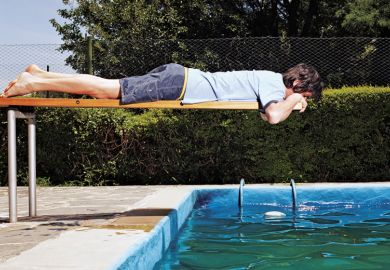The number of students accepted to universities with lower entry criteria in the UK has fallen for the first time in four years, suggesting a shift in competition for students between the nation’s higher education institutions, according to Ucas analysis.
The admission service’s end of cycle report showed the total number of students entering UK higher education in 2016 reached 535,200, an increase of 0.5 per cent on last year, with a record number of UK 18-year-olds accepted to university – rising 1.5 per cent to 238,900.
Ucas also reported that acceptances from other European Union countries had increased by 2,000 (7 per cent) to 31,400, the highest on record. Within this figure, there were some “above average” increases from countries such as Poland (27 per cent), Germany (21 per cent) and Spain (18 per cent).
However, there was more significant change within the 465,500 UK students placed.
While acceptances to universities with high or medium entry tariffs increased in 2016 to their highest on record, students placed at lower-tariff institutions fell by 6,300 (2.9 per cent) to 214,700, the first fall since 2012. Significantly, medium-tariff institutions increased their acceptances by 5,200 (3.2 per cent) to 171,200, their highest on record. Acceptances to higher-tariff institutions rose by 2.8 per cent to 149,400.
Last year, higher-tariff institutions lowered their entry standards to expand at the expense of less prestigious providers. However, with higher-tariff institutions broadly recruiting the same profile of students as they did last year, the report revealed that medium-tariff institutions recruited more students with lower grades in 2016 at the expense of lower-tariff providers, suggesting a shift in competition between UK universities.
About 40 per cent of the 5,200 extra acceptances to medium-tariff providers came from an additional 2,200 English 18-year-old applicants who were accepted with A-level grades equivalent to BBC and below. At lower-tariff institutions, 1,800 fewer English 18-year-old applicants were accepted with these A-level grades.
“In 2016 medium-tariff institutions have been able to increase the number of A-level students they’ve recruited in [the] grade ranges CDD through to BBC,” said Mark Corver, director of analysis and research at Ucas. “Those increases…have been balanced off by lower-tariff institutions who have been recruiting fewer of those A-level students.”
Dr Corver told Times Higher Education that lower-tariff institutions have a slightly different task to other providers because they “have to stimulate new people to apply”.
“For instance, there are 37,000 fewer men than women entering [higher education] among 18-year-olds. The reason why they’re not entering is because they have lower GCSE and A level and BTEC grades,” he said.
“But most people would argue there’s no intrinsic reason why women should go to university at a much greater rate than men. That pool of men, if the system was more equal, would be available for lower-tariff institutions to recruit.”
The report also warned of the gap between students from higher- and lower-income backgrounds entering higher education. It found that those from backgrounds with the highest entry rates were nearly four times more likely to enter university in 2016 than students with lower entry rates. Although this is a strong decline from a decade ago, Mary Curnock Cook, Ucas’ chief executive, warned that this progress “may be slowing down”.
“Young people who come from poor families...have no less intrinsic potential to benefit from higher education than their peers. And that makes me reflect on the huge waste of potential these current inequalities imply,” she said. “These differences are now so wide, and the waste of potential they imply so great, that a new approach and determination is needed.”
Commenting on the increase in EU acceptances, Dominic Scott, chief executive of the UK Council for International Student Affairs, said that while there should be caution about drawing too many conclusions from the figures that cover undergraduate applications, he “welcome[d] the fact that EU numbers have continued to rise as in previous years – and have clearly not as yet been significantly affected by Brexit issues. Next year, of course, may be another matter.”
Register to continue
Why register?
- Registration is free and only takes a moment
- Once registered, you can read 3 articles a month
- Sign up for our newsletter
Subscribe
Or subscribe for unlimited access to:
- Unlimited access to news, views, insights & reviews
- Digital editions
- Digital access to THE’s university and college rankings analysis
Already registered or a current subscriber?








